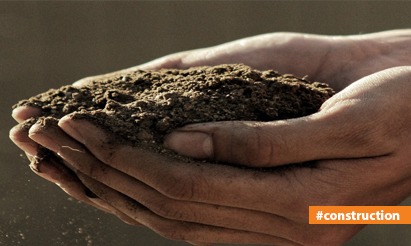Excavation in Construction: The First Step Towards Building Greatness!
Excavation is the process of removing earth, rock, or other materials from the ground. It is a common practice in construction, as it is often necessary to excavate in order to create a foundation for a building or other structure.
The excavation process can vary depending on the size and complexity of the project. However, there are some basic steps that are typically involved.
- Surveying the site: The first step is to survey the site to determine the exact location and extent of the excavation. This is important to ensure that the excavation does not impact any existing structures or utilities.
- Marking the boundaries: Once the site has been surveyed, the boundaries of the excavation area are marked out. This is done using stakes, flags, or other markers.
- Removing the topsoil: The topsoil is typically removed first. This is the layer of soil that is closest to the surface and is often the most fertile.
- Excavating the subsoil: The subsoil is the layer of soil that lies beneath the topsoil. This is the layer that will be used to create the foundation for the structure.
- Removing any obstructions: Any obstructions that are found in the excavation area, such as rocks or tree roots, must be removed.
- Backfilling the excavation: Once the excavation is complete, the area is backfilled with the excavated material. This helps to level the ground and prevent erosion.
The excavation process can be a dangerous one, so it is important to take safety precautions. This includes using proper safety equipment, such as hard hats, safety glasses, and steel-toed boots. It is also important to be aware of the potential hazards, such as cave-ins and underground utilities.
Excavation is an important part of many construction projects. By following the proper procedures, the excavation process can be completed safely and efficiently.
Here are some of the different types of excavation used in construction:
- Hand excavation: This is the most basic type of excavation and is done using hand tools, such as shovels and picks. It is typically used for small projects or for areas that are difficult to access with machinery.
- Machine excavation: This is done using machinery, such as excavators and bulldozers. It is more efficient than hand excavation and can be used for larger projects.
- Hydraulic excavation: This is a type of machine excavation that uses a high-pressure water stream to loosen the soil. It is often used for underwater excavation or for areas that are contaminated with hazardous materials.
- Vacuum excavation: This is a type of machine excavation that uses a vacuum to remove the soil. It is often used for environmental cleanup or for areas where there are underground utilities.
The type of excavation used in a construction project depends on the size and complexity of the project, the budget, and the environmental conditions.
Disclaimer: The views expressed above are for informational purposes only based on industry reports and related news stories. PropertyPistol does not guarantee the accuracy, completeness, or reliability of the information and shall not be held responsible for any action taken based on the published information




